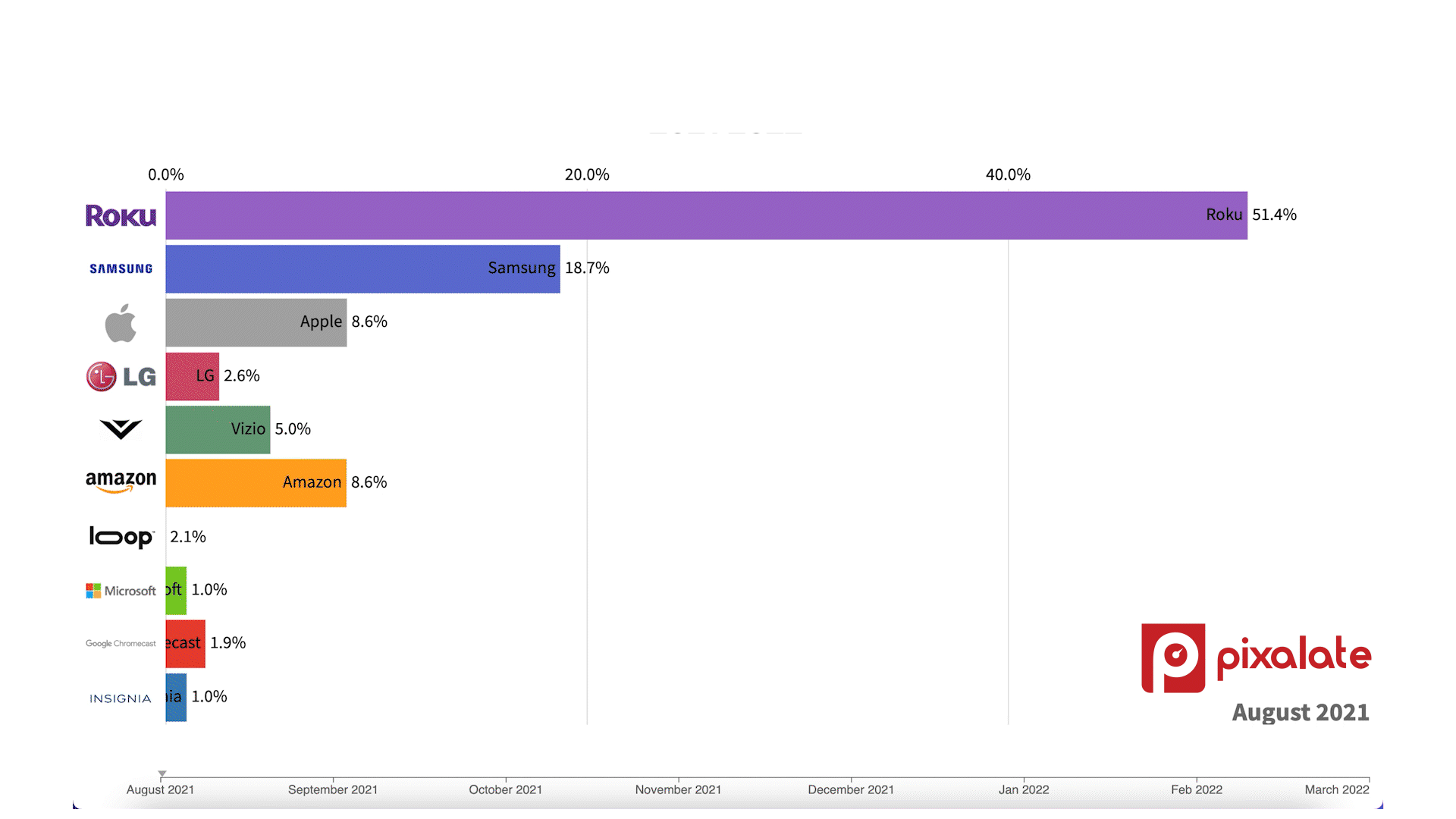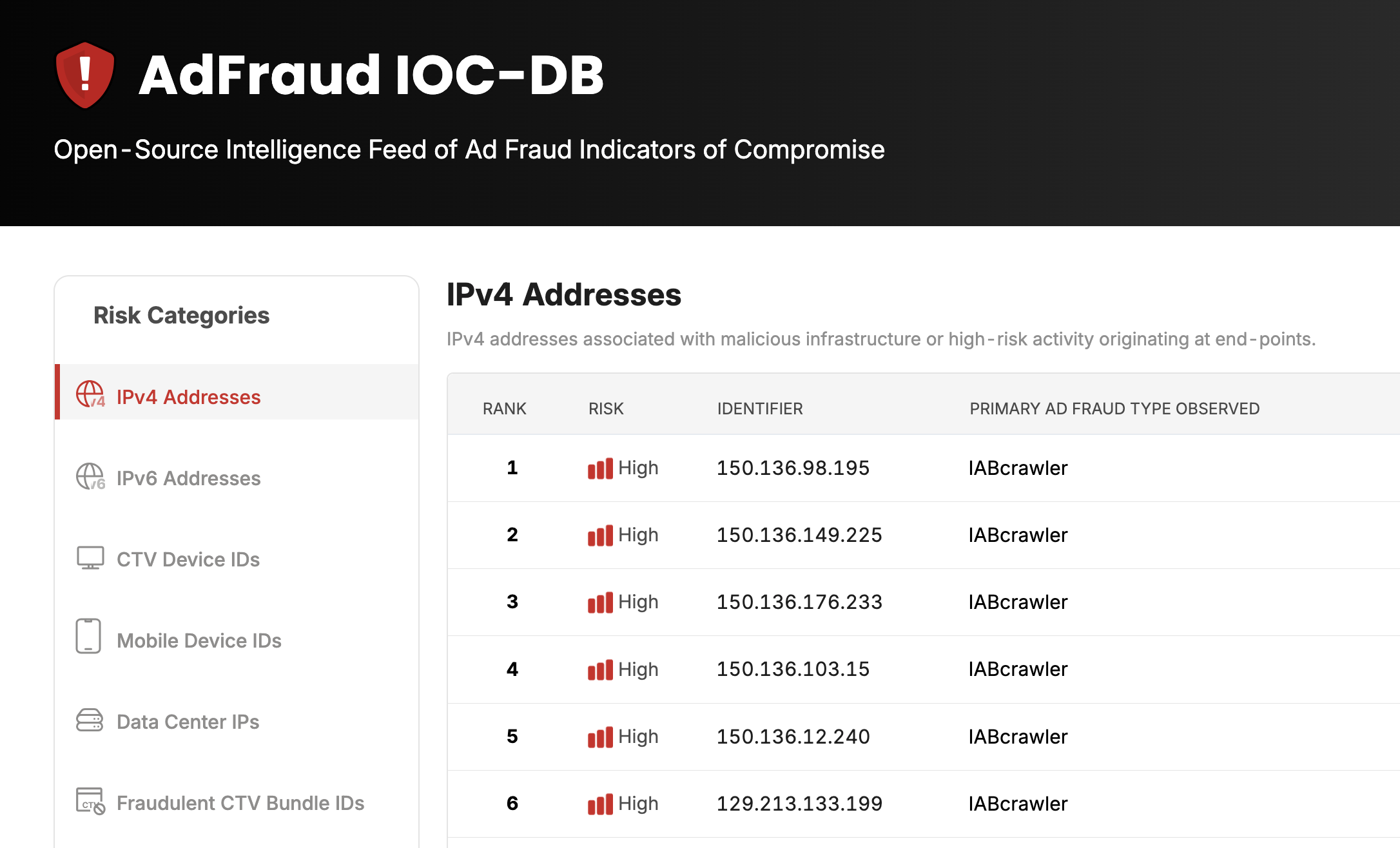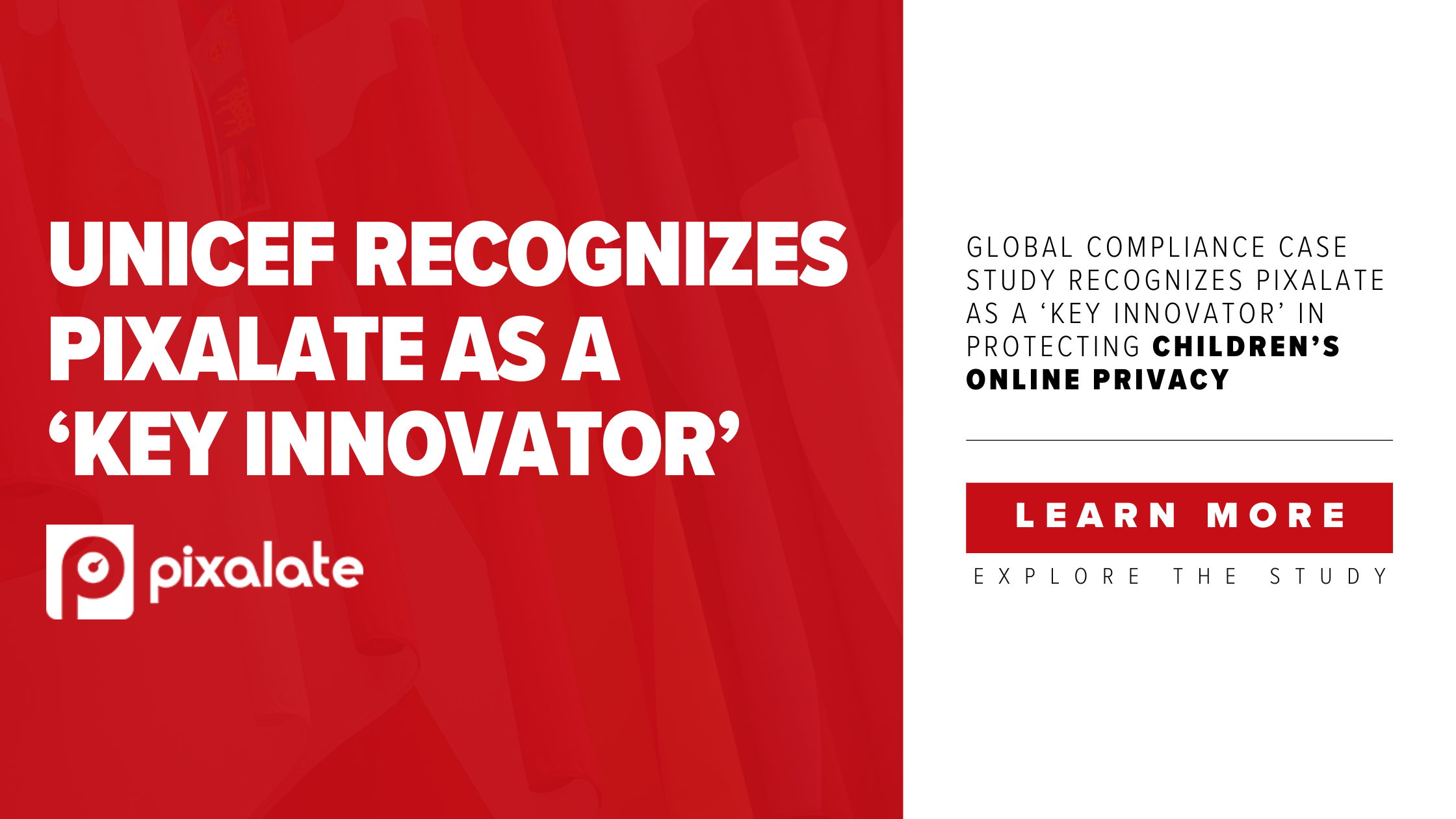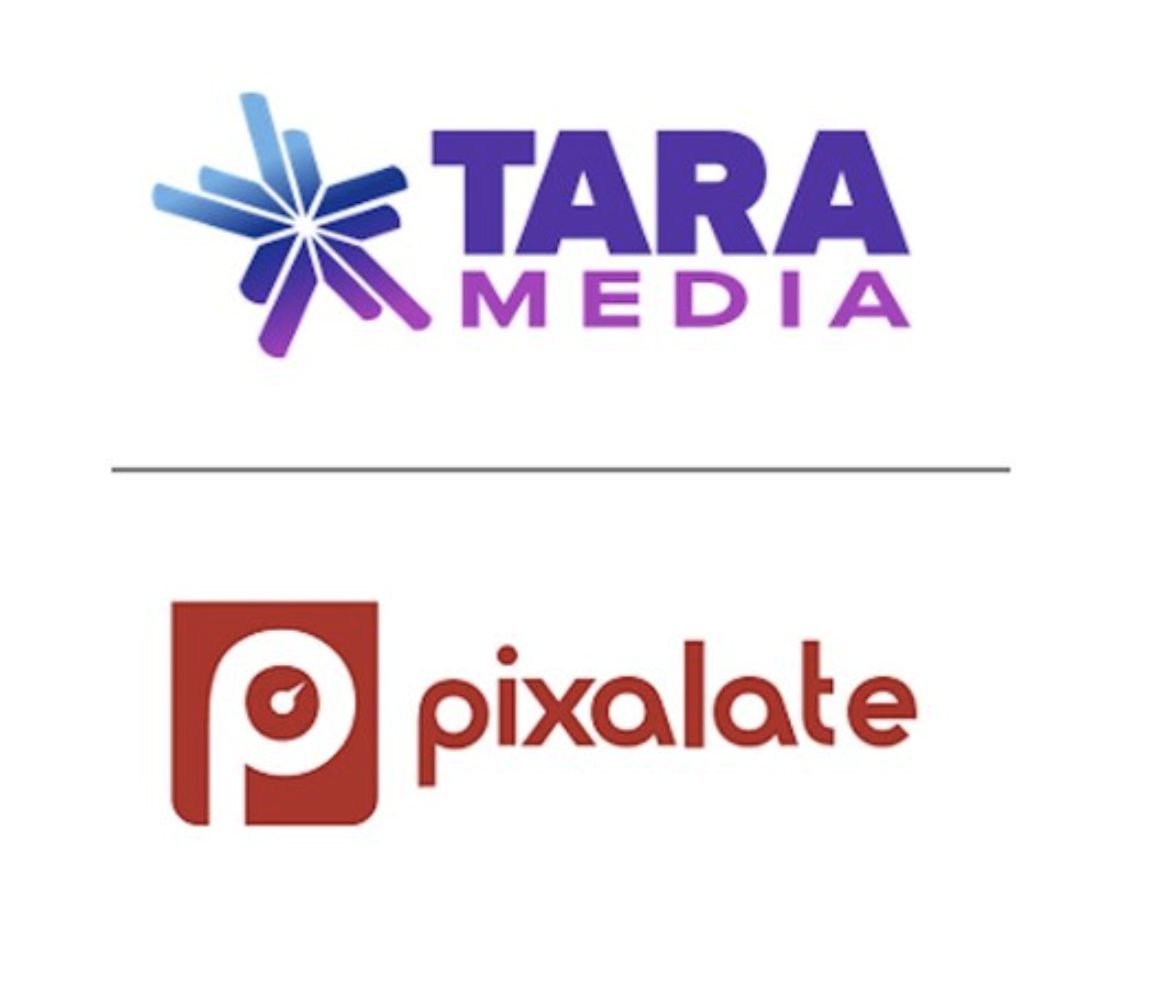Executive Overview
Pixalate has added some important first-to-market capabilities to the Ad Trust and Safety API (ATSAPI) suite, which are essential in today’s media and device landscape. We have also introduced new pricing tiers (priced at $99, $299 and $499) to make the Fraud API more accessible to smaller developers.
The new capabilities that are now covered by the Fraud API are:
- Support for IPv6 endpoints
- Protection against Click Fraud
- Expanded CTV platform coverage
Let’s look at each of these updates in more detail:
1. IPv6 Support
What is IPv6, and why is it important to the ad tech ecosystem?
IPv6 was introduced in the late 90s, as a way to mitigate the problem of IPv4 address exhaustion (the depletion of the pool of unallocated IPv4 addresses). This was especially true for IoT, where IPv4 could not supply the number of distinct IPs needed for each device. IPv6 addresses are 128-bits in length, instead of the 32 bits of IPv4. This longer identifier provides enough address bandwidth to uniquely identify all the connected devices across the IoT ecosystem, Smart Cities, and potentially also across all devices within a home network or a business.
IPv6 adoption is now finally escalating, with growth being fueled by both residential and wireless ISPs. Wireless service providers in the US have made a push around 5G deployments in the last few years, and all 5G devices have IPv6 addresses (even though they also support IPv4 for the interim). Based on Pixalate's recent analysis of IPV6 enabled traffic, we see close to 90% of ad-based impressions coming from these IPs across the top ISPs (based off volume). In addition, we see close to 80% of mobile ad impressions coming from these IPs across the majority of Pixalate's measured inventory. This is a substantial increase from the last time Pixalate examined this data back in 2017.
TOP ISPs Q12022 based off Impressions Ipv6EnabledRate Impression Contribution:
| ISP |
IPv6 Enabled Rate |
| Comcast Cable |
92.19% |
| Spectrum |
80.32% |
| T-Mobile USA |
99.90% |
| AT&T U-verse |
96.02% |
| Verizon Wireless |
99.51% |
| AT&T Wireless |
99.90% |
| Jio |
99.97% |
| Cox Communications |
85.77% |
This is a substantial increase from the last time Pixalate reported IPv6 data, back in 2017. At that time, for example, Spectrum and AT&T Wireless were below 10%, Verizon Wireless was at 89% and AT&T U-Verse was at 17.9%
In addition, we see that at a global level, a majority of devices across all device types are now IPv6 enabled.
| deviceType |
IPv6 Enabled Rate |
| mobile/tablet |
79.87% |
| connected-tv/ott |
63.91% |
| desktop |
66.65% |
A look at Google’s IPv6 Tracker reflects the growth we are seeing -

These adoption numbers are important because they indicate that IPv6 is now prevalent across the board, and this is particularly important for two key device types - Mobile devices and CTV devices. Ads on these devices are considered high-value inventory, which also makes them a desirable target for fraudsters. This, in turn, makes the ability to detect IVT across IPv6 endpoints critical.
IVT and Pixalate’s IPv6 support
Pixalate has handled IPv6 endpoints for a long time. We have analyzed traffic behavior across these endpoints as well as in relationship with IPv4 endpoints and have developed a number of protection mechanisms across both IPv4 and IPv6 endpoints.
We recommend that given the world is still in a transitory phase where IPv4 and IPv6 need to coexist, clients should support both types. An IPV4 based blocking solution, since it is less granular in terms of identifying a traffic point (an entire household could have the same IP, or one cell tower), is also less precise in identifying IVT. This means IPv6 will, in many cases, be able to fill that gap - targeting “good” IPv6 devices while blocking the “bad”, all of which would have been blocked under IPv4.
Most importantly, Pixalate has developed a proprietary - and patented - mechanism to detect both IPv4 and IPv6 information for each impression. This means we create threat intelligence at both levels while providing enhanced coverage.
Fraud API Use Case
While Pixalate has used this technology to protect clients via blocklists in the past, we are now making this capability available via the Fraud API. Any developer can now use the Pixalate Fraud API to vet the IPv6 endpoint to which they are trying to get an ad delivered. The Fraud API provides a high speed response, checking whether that end point (mobile or CTV device or web browser) is a potential IVT source, and enables developers to take decisions on that endpoint.
Code Sample:
curl -i -X GET \
'https://api.pixalate.com/api/v2/fraud?ip=2022:642:4c0a:8c68:dbe:c6b8:d032:2022&deviceId=123e4567-e89b-12d3-a456-426655440000'\
-H 'x-api-key: MY_API_KEY'
2. Click Fraud
Click Through Rate (CTR) is an important metric in advertising that buyers use to evaluate the effectiveness of their ad campaigns. Fraudsters try to game this measure by faking clicks and making their impressions appear more valuable than they actually are. In addition, the measurement options available vary. In some cases, the ad platforms enable measurement tags to be easily added to the ad creatives. In other cases there are challenges in integrating measurement tags and measuring clicks accurately.
All these factors make measuring Clicks correctly and checking for IVT from the available signals challenging. Pixalate is one of few companies in the market that has created a solution for these challenges - handling matching, looking at signals for patterns of questionable behaviors etc. We also support a variety of integration options, combined with fraud detection that handle clicks matching as well as tracking behaviors to detect IVT related to clicks.
Simple Integration example
[https://xyz.com/a?paid=[PARTNER_ID]]&avid[ADVERTISER_ID]&publisherid=[PUBLISHER_ID]&plid=[CREATIVE_ID]&siteId=[SITE_ID]&caid=[CAMPAIGN_ID]&kv1=[WxH]&kv2=[URL]&kv3=[USER_ID]&redirect={Redirect_URL}]
In addition to the wide variety of IVT metrics, we have a number of metrics related to measuring clicks:
- Gross Clicks
- Gross CTR
- Gross Matched Clicks
- Clicks
- CTR
- Matched Clicks
- Net Clicks
- Net CTR
- Net Matched Clicks
We also have the capability to detect a variety of IVT types related to Clicks:
- Click Farm
- Display Click Fraud
- Duplicate Clicks
- Fast Clicker
- Video Click Fraud
Fraud API use case
Pixalate tracks the sources of click fraud (as well as other types) IVT, and we are now using that information to power the Fraud API. Users of the Fraud API can be protected from sources of click fraud too. When they make a call to the Fraud API to check the likelihood that an endpoint is a source of IVT, the check includes the intelligence gathered around that endpoint being a source of click fraud. This check allows the developer to not make an ad request for that endpoint if the likelihood of IVT is high, and perhaps even block that endpoint from using their app, which helps reduce the amount of IVT seen by advertisers and increase the value of these impressions.
Code Sample:
curl -i -X GET \
'https://api.pixalate.com/api/v2/fraud?ip=212.12.3.12&deviceId=123e4567-e89b-12d3-a456-426655440000&useragent=Mozilla/5.0 (iPhone; CPU iPhone OS 15_4_1 like Mac OS X) AppleWebKit/605.1.15 (KHTML, like Gecko) Version/15.4 Mobile/15E148 Safari/604.1'\
-H 'x-api-key: MY_API_KEY'
3 Expanded CTV Platform coverage for IVT Blocking
CTV has experienced huge growth over the last couple of years - both in terms of the amount of media consumed, as well as the number of CTV devices that are available for consumers.
According to Pixalate’s latest release in CTV Trends in March 2022, Roku remains the clear dominant CTV device leader in North America, but Samsung has recently gained some ground.
Other platforms have also been growing, which is a reflection of the investment that all the CTV platforms have made to improve their capabilities.

The direct implication of this data is that all these device platforms that used to be considered the long tail are now important and need to be better supported.
Pixalate has been tracking and building device ID support for all these device platforms, which are all now supported via the Fraud API.

We now support
- Apple
- Android
- FireTV
- LG
- Panasonic
- Roku
- Sony
- Vizio
in addition to a number of other lower volume device types, across the array of industry leading CTV IVT metrics.
Fraud API use case
Pixalate’s broad coverage of CTV devices enables us to check a wider variety of IVT sources. Developers can now use the Fraud API to check from a broader range of CTV devices on the likelihood of that endpoint being a source of IVT. The broad CTV device coverage, combined with the IPv6 support discussed above, enables Pixalate to run our fraud intelligence algorithms and provide a better threat assessment for our customers.
Code Sample:
curl -i -X GET \
'https://api.pixalate.com/api/v2/fraud?ip=2022:642:4c0a:8c68:dbe:c6b8:d032:2022&deviceId=123e4567-e89b-12d3-a456-426655440000'\
-H 'x-api-key: MY_API_KEY'
Useful Links:
To learn more about all the updates to the Fraud API, please visit https://developer.pixalate.com/pricing and sign up or contact our sales team to learn more.








